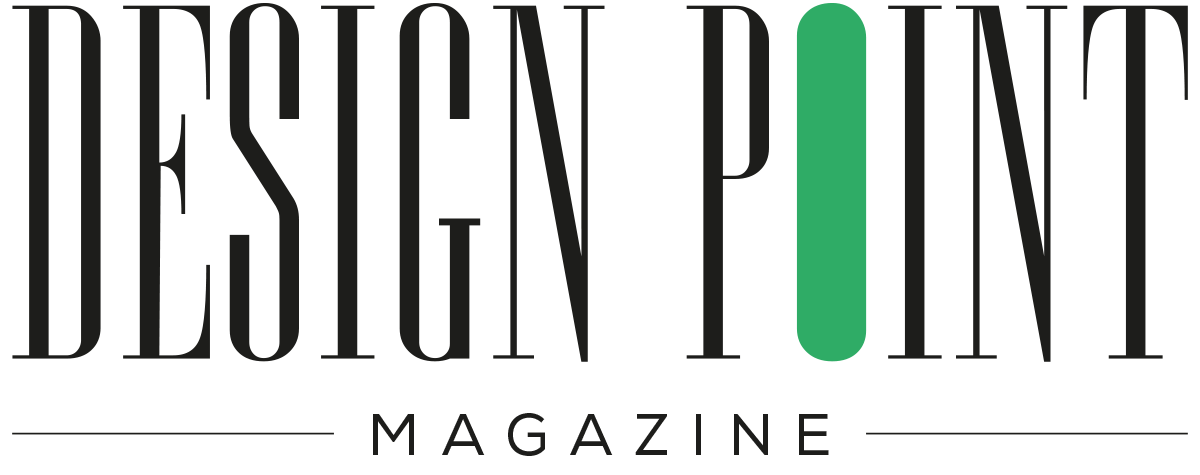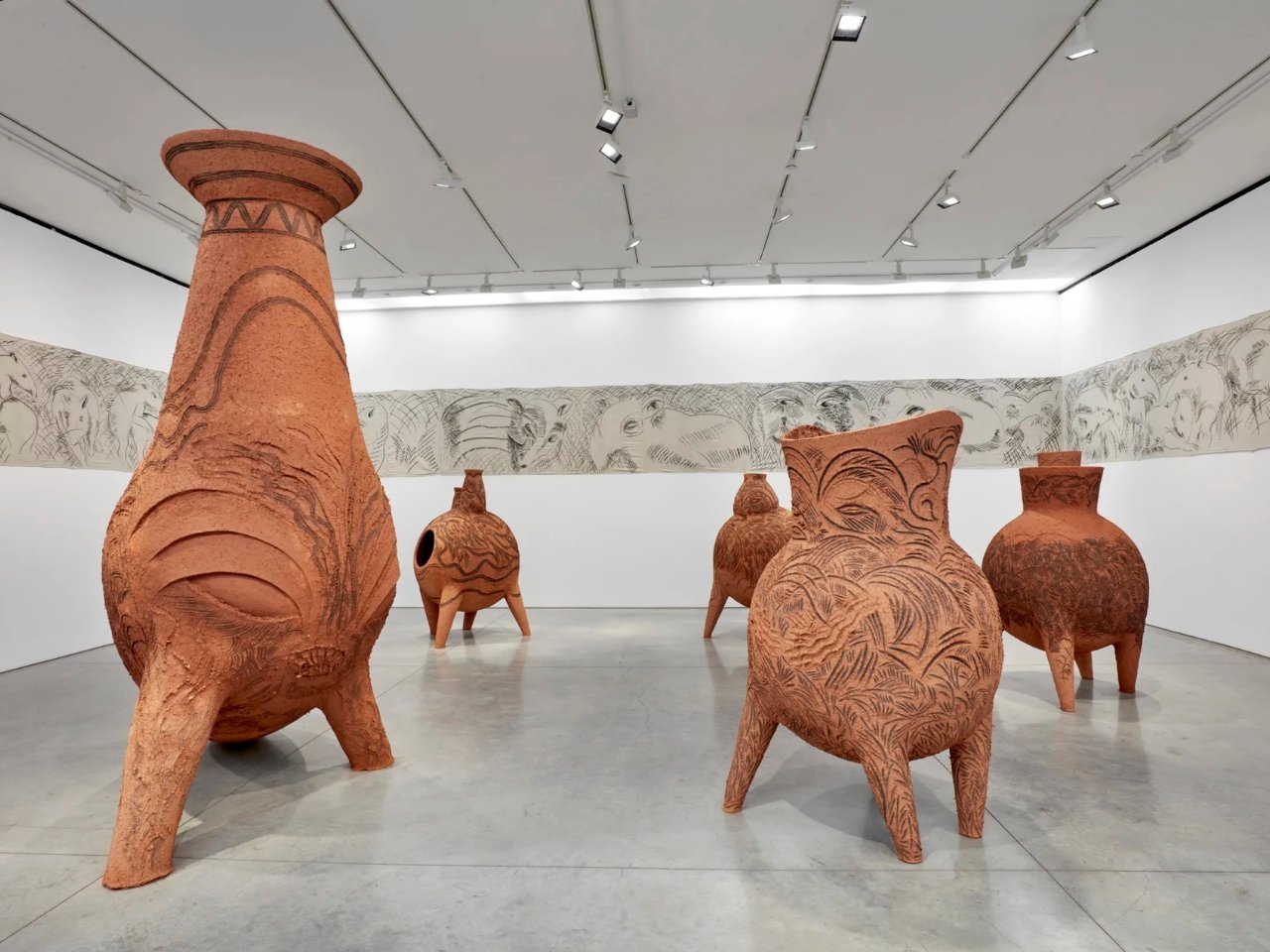We love exhibits that are able to blend together culture, politics, and storytelling seamlessly into eye-catching visual representations. Argentine artist Gabriel Chaile (b. 1985, San Miguel de Tucumán) makes his New York exhibit debut exhibit at the Marianne Boesky Gallery with “Esto es América, o qual é o limite?”. The exhibition features a striking suite of adobe sculptures, charcoal drawings, and protest photographs that fuse indigenous aesthetics with contemporary political commentary.
Chaile’s work is built on what he calls the “genealogy of form,” the idea that visual motifs recur across history, gaining fresh meaning each time they reappear. In this show he reinterprets the ceremonial vessels and architectural gestures of Northeast Argentina’s native communities, using the earthy medium of adobe to create large‑scale pieces that feel both ancient and urgent. The central sculpture: a towering form that hints at a lizard or bird caught in transformation, commands the gallery space. It is surrounded by four anthropomorphic “bread‑oven” shapes, together suggesting a procession, a march, or a protest.
Designer Name: Gabriel Chaile
The sculptures were built on site in New York, allowing the material to absorb the city’s energy while retaining the tactile qualities of traditional earthenware. Their surfaces are covered in dense black line drawings that interweave symbols, maps, and abstract marks. The intricate networks make each piece a visual encyclopedia of memory, inviting viewers to linger and decode hidden stories.
A key inspiration for the exhibition was Chaile’s observation of a No Kings Day protest while in residence at Tinworks Art in Bozeman, Montana. Photographs and charcoal sketches documenting the event line the walls, providing a contextual backdrop for the sculptures. In the protest, participants stood quietly on sidewalks, holding ambiguous signs that spanned ages, from children to elders. Chaile recalls feeling a subtle alignment with the gathering, not necessarily with its political stance but with its broader call for inclusive coexistence.
The charcoal drawings were executed directly on canvas attached to the walls while the adobe pieces dried, allowing the artist’s hand to echo the same motifs that appear on the sculptures. This parallel process creates a dialogue between the three‑dimensional forms and the two‑dimensional marks, reinforcing the notion that history and present moment are intertwined.
The bilingual title deepens the conceptual layer. “Esto es América” declares in Spanish, “This is America,” while the Portuguese phrase “o qual é o limite?” asks, “What is the limit?” The juxtaposition of Spanish and Portuguese, which are languages that colonized the continents, mirrors the exhibition’s exploration of borders, limits, and shared futures. Chaile’s work asks viewers to consider where the boundaries of cultural identity end and where the possibility for collective belonging begins.
“Esto es América, o qual é o limite?” offers a compelling blend of material craft, anthropological insight, and timely protest imagery. It invites the general audience to reflect on how ancient forms can speak to modern struggles, and how art can serve as both a memorial and a catalyst for change. The exhibition runs at Marianne Boesky Gallery through October 31, 2025.
The post Gabriel Chaile’s Marianne Boesky Gallery exhibit blends indigenous form, protest, and storytelling first appeared on Yanko Design.

